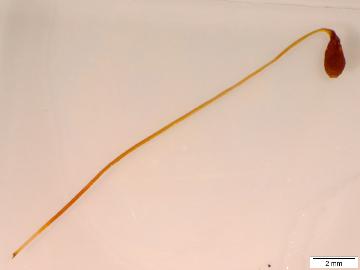This just came in to my mailbox from BryoNet, the mailing list for the world's bryologists. It comes from Brent Mishler, who is a top bryologist at the University of California, Berkeley (formerly at Duke!). He sends along this poem on mosses, from nineteenth century Britishman William Gardiner. A clockmaker by trade, Gardiner was an avid collector of mosses and published a few of the first several important books on mosses. This poem appeared in one of them, Twenty Lessons on British Mosses, first published in 1846.
I think I can safely say this is the greatest moss poem ever written.
O! Let us love the silken moss
That clothes the time-worn wall
For great its Mighty Author is,
Although the plant be small.
The God who made the glorious sun
That shines so clear and bright,
And silver moon, and sparkling stars,
That gem the brow of night-
Did also give the sweet green moss
Its little form so fair;
And, though so tiny in all its parts,
Is not beneath His care.
When wandering in the fragrant wood,
Where pale primroses grow
To hear the tender ring-dove coo,
And happy small birds sing,
We tread a fresh and downy floor,
By soft green mosses made ;
And, when we rest by woodland stream,
Our couch with them is spread.
In valley deep, on mountain high-
The mosses still are there :
The dear delightful little things-
We meet them everywhere!
And when we mark them in our walks,
So beautiful, though small,
Our grateful hearts should glow with love
To Him who made them all.
I think I can safely say this is the greatest moss poem ever written.



